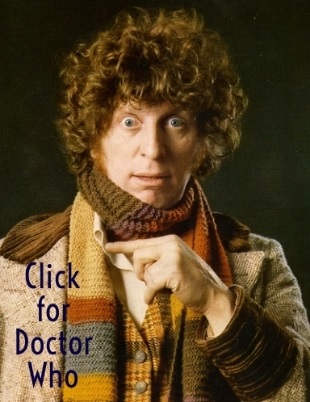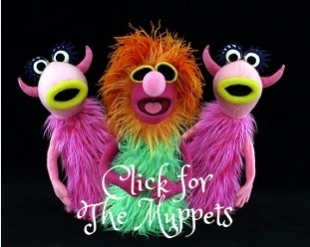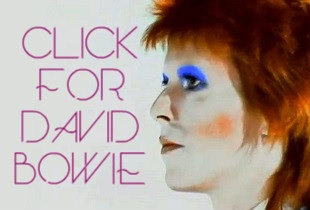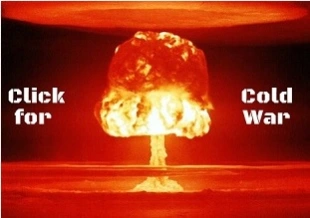Retro Crimbo: Bob’s fantastic festive folly ~ Band Aid 1984
Merry minstrels: the great and the good (and, yes, the bad) of British music together as Band Aid, determined to apply something of a plaster to Ethiopia’s starving for Christmas 1984
Christmas and giving. The two go together like the holly and the ivy; like plum pudding and custard; like mistletoe and naughty smooches at the office Crimbo party. But, traditionally, Christmas and giving to charity don’t go together so much – for right or wrong, the age-old practice this time of year is to give to those we know, rather than to truly needy souls we don’t. However, in 1984 all that changed.
In this, the second offering of the Retro Crimbo season here at George’s Journal, we’re taking a look at the event that kick-started modern-day music fundraising as we know it. Yes, following on from my article in the summer that focused on 1985’s Live Aid (you may remember it and, maybe, you may remember my piece on it), this one – something of a prequel, if you like – takes a look at the one, the only, Band Aid.
Of course, how Band Aid came about is a story that’s gone down in the annals of rock and pop legend. One night, October 25 1984 to be precise, lead singer of post-punk band The Boomtown Rats, Irishman Bob Geldof, was watching the BBC’s Nine O’ Clock News and witnessed a report. It was delivered by journalist Michael Buerk from Ethiopia and was about the famine that was devastating its people.
Trip of the unbountiful: BBC reporter Michael Buerk and cameraman Mohamed Amin in Korem
Stunned and profoundly moved, like the millions of Britons who had also seen the report, Geldof decided he would try and do something about it. As someone with something of a public profile and a chap who had many musical mates, he came up with the notion of producing a celebrity record for Christmas that would raise the issue’s profile and, hopefully, raise some dosh to help out the famine-stricken Ethiopians.
Now, while the origins of Band Aid are well recalled, the origins of the famine itself are not. An east African country, Ethiopia saw record low rainfall in 1984 and then into 1985, which affected the people of a large proportion of its northern provinces (including the area that is modern-day Eritrea). The impact of the drought was exacerbated by the lack of government preparation, partly but not entirely due to a lack of funds owing to their allocation instead to fighting insurgencies – successionist wars were taking place in Eritrea and Tigre. Indeed, at this time Ethiopia possessed the largest standing army in sub-Saharan Africa, thanks to the government spending 46 percent of GDP – yes, 46 percent – on the military, with just 5 percent or perhaps less on health.
By autumn ’84, the famine was so bad that Michael Buerk journeyed to Ethiopia for the second time that year (he’d previously been there in June), specifically visiting the town of Korem, where 40,000 refugees had converged in the hope of receiving food and medical aid. Buerk’s October 25 report made for a seven-minute blitzkrieg on the eyes, ears and emotions, as the sight of starving and dying, skeletal adults and children was accompanied by his assertion that this was a ‘biblical famine in the 20th Century’ and that aid workers on the ground (who, while totally committed, were completely overwhelmed) described the scene to him as ‘the closest thing to hell on Earth’. It’s estimated that 8 million Ehiopians became famine victims and up to 1 million died (yet that figure, to this day, is hotly disputed).
It’s perhaps also important to note that immediately following the report’s broadcast, UK aid organisations piped up on how little the rest of the world was doing to help the Ethiopian people, appealing for more to be done. However, their speaking out was sadly not going to bring about the change it should have done; ambitiously, in this regard, Geldof then was looking to do what they couldn’t.
A somewhat scruffy and unimpressive figure, Geldof had in fact been public school-educated in his native Ireland and had worked as a music journalist in Vancouver, Canada, prior to forming The Boomtown Rats. He was also opinionated and had more than a brusque manner about him when he wanted (an outburst on Irish TV some years before criticising politicians and the Catholic Church for Ireland’s problems had ensured his band could no longer actually play in that country). In which case, it’s no surprise that in plunging himself headfirst into securing the services of British pop’s top performers – all for free – for his Band Aid project, he was sure he’d succeed. He simply wouldn’t take no for an answer and, given his tactics in running the following year’s Live Aid are well known, he no doubt simply bullied many of his contemporaries into participating.
And participate they did. Exactly one month to the day after Buerk’s news report – and exactly one month to Christmas – on the morning of Sunday November 25, Geldof rolled up at dawn at SARM Studios in London’s Notting Hill. Alongside him was frontman of the successful synth-tastic band Ultravox, Midge Ure, who had written a melody to the lyrics Geldof had supplied him for Band Aid’s song. In actual fact, Ure had already recorded some basic tracks (the song’s keyboard melody, essentially) at his home studio the previous day.
Fashion faux-pas: but Bob Geldof doesn’t miss a publicity trick as he and the similarly sartorially challenged Midge Ure arrive at the SARM Studios to create the Band Aid single
This was to prove a smart move, for Geldof and Ure’s recording window was very narrow – they had been allotted no more than 24 hours by the studio to get the thing recorded and mixed. It was going to be a tough schedule, but, hey, the studio space was being given up for free (hence why it was taking place on a Sunday rather than during the week). First and foremost, though, Bob and Midge’s biggest concern was whether any of the performers who’d pledged to take part would actually turn up. Sure, they’d all agreed they would, but the proof would be in the pudding of them arriving on the day. And there was the very real possibility that Geldof would be left with egg on his face, as he’d announced live on BBC’s Radio 1 that the event was to take place, so the world’s media was ready and waiting at the studio for everyone to arrive, as well as video director Nigel Dick who was to capture footage from the day and create from it the single’s video.
Geldof needn’t have worried, though. One by one, the UK’s biggest chart acts rolled up – Duran Duran, Sting, George Michael, Spandau Ballet, Paul Weller (formerly of The Jam and now frontman of The Style Council), Bono and Adam Clayton of U2 and, last but not certainly not least, Sara Dallin, Siobhan Fahey and Keren Woodward, otherwise known as Bananarama (usually styled, the female trio rather wonderfully emerged dressed-down out of a runaround owned by one of their mums). Even Kool & The Gang’s James ‘J.T.’ Taylor and Shalamar’s Jody Watley (the only Americans on the record) were in attendance, as well as Status Quo’s Francis Rossi and Rick Parfitt and New Romantic oddity Marilyn, who hadn’t even been invited.
At 11am the work started. The coterie of pop and rock contemporaries all gathered in the studio, with Ure in the producer’s booth calling the shots. First of all, to get everybody into it, Geldof and Ure gathered them all together in a big group and had them sing the song’s repeated ‘Feed the world, let them know it’s Christmas’ crescendo. This also ensured they could capture the all-important group photo (above top) as early as possible.
Dodgy hair and hair of the dog: Paul Young and members of Banarama, Heaven 17 and Duran Duran warble their lines (left), while Boy George, wobbling, makes it through his (right)
It had been Geldof’s desire to get the biggest chart acts of the day to lend the thing the biggest possible exposure (hence why, even though this was a charity initiative to aid black Africans, there were few black performers involved). So, given the combined record-selling stature standing together in the room (there was perhaps even more ego than hairspray in attendance), now unsurprisingly followed a bit of a stand-off over who would sing first – and potentially cock it up with everyone watching. In the end, it was Spandau Ballet crooner Tony Hadley who took the plunge and gave it a bash – singing the whole thing through all in one go (although, in actuality, both Sting and Duran Duran’s frontman Simon Le Bon had already recorded lyrics at Ure’s house the day before, so the latter could have a lyrical guide). The ice now broken, all the other artists who’d been assigned to sing went right the way through the tune as well – allowing Ure to decide which parts to allocate to which singers. Even Le Bon and Sting re-recorded their lyrics; the former to be part of the moment, the latter to provide necessary harmonies.
Solo artist Paul Young was chosen to deliver the song’s two opening lines, ‘It’s Christmas time, there’s no need to be afraid/ At Christmas time we let in light and we banish shade’. These lines and the others he delivered (he ended up singing the most of any artist) had been intended for David Bowie, who hadn’t been able to make it. Young was aware of this, but happily filled the rock/ pop god’s shoes. Bowie did make it on to the single, however, having recorded a spoken message and posting it to Geldof in time for recording day, so it could be utilised on the single’s B-side (a repeat of the song on the A-side, but with several such messages playing over the top). Indeed, Paul McCartney had done the same thing.
The song’s next two lines had been intended for Boy George, colourful frontman of white reggae band Culture Club and favourite of grandmas up and down the country. However, there was a bit a problem when it came to this – he wasn’t there. Geldof had been worried he might not turn up, as Culture Club were slap-bang in the middle of a US tour at the time, so, in the previous few days, had phoned George several times to secure his services. George had assured him he would be there, on time at 9am on the Sunday morning just like everyone else, especially when Geldof had last phoned him late the previous night.
‘Once Status Quo produced their bag of cocaine and the booze started to flow – I brought six bottles of wine from my flat, which disappeared in a minute – it became a party’ ~ the Band Aid recording, according to journalist Robin Eggar
The absence of the singer – who was a big draw for the project given his perfectly suited soulful voice and high recognition factor – made Bob angry; not a very wise move on George’s part. So Geldof immediately phoned George’s hotel in New York, waking him in the middle of the night over there and discovering he’d been partying into the wee hours. This merely angered Geldof more and, effing and blinding (what else?), he told the singer he’d book him on the next flight to London and he’d better make sure he was on it. Indeed, it was just as well Bob called back half-an-hour later to chivvy George along – the latter had fallen back asleep. Eventually, however George did make the flight, which was on Concorde, and made it to the studio for 6pm, by which time most people had drifted off home. He recorded his lines, getting through the ordeal with cheap booze that someone had had to purloin from a local off-licence owing to his monster hangover.
Other notable contributions on the single came from U2’s Bono (a minor name at the time, as his band was yet to make the really big time), who sang the ‘Well, tonight thank God it’s them instead of you’ line, made truly memorable by his characteristic delivery. And, actually, so proud of it was Bono to become that twenty years later he fought to have his version of the line included on the Band Aid 20 single in place of The Darkness’s Justin Hawkins’ attempt. Elsewhere, Phil Collins was brought in for drumming duties. Wearing an oh-so natty paisley patterned sleeveless pullover, Collins did his bit and his drumming provided the song’s percussion, in addition to an African-style rhythm that kicked-off the song – sampled from Tears For Fears’ debut album The Hurting, in fact.
When the music stopped: Geldof challenges Thatcher (l); Ure begins the delivery challenge (r)
The recording finally finished, Ure and Geldof set to mixing and then polishing the production. They completed the single, entitled Do They Know It’s Christmas?, after an epic – and yet impressively short – 21 hours, leaving SARM Studios at 8am the following morning. Now Monday, the single was immediately sent off to the pressing plant which had promised, free of charge, to have the thing pressed the following day. The video was completed in short time too, just 48 hours after the song, by Nigel Dick and a small team, ready to be sent off to the BBC.
Indeed, BBC 1 controller Michael Grade watched the video and immediately ordered for all programmes on the station that day to run five minutes early so it could be accommodated on that evening’s edition of the legendary Top Of The Pops – breaking with tradition in the process too, for Do They Know It’s Christmas? became the first song ever to be featured on the chart show prior to release. David Bowie, having flown in specially, recorded a message for the start of the transmission.
However, the record-buying public had already been stirred into something of a frenzy for the song thanks to Geldof appearing on DJ Mike Read’s Radio 1 Breakfast Show on the Monday morning to promote it, in addition to it making the pages of every tabloid paper that day too, of course. Radio 1 played its part and more, as its DJ that Monday played the tune every hour, ensuring it received maximum exposure (at that time, yet to be released singles usually recieved seven or eight plays a day on the station).
The following week, Do They Know It’s Christmas? was finally released – on December 3, to be exact. In this week alone, it moved more units than all the other the songs on the chart combined – a total of around one million – ensuring it became the UK’s fastest ever selling single. Inevitably, it went straight in at #1 and stayed there for five weeks, becoming that year’s coveted Christmas #1 in the process. And it was coveted too, considering the hugely popular pop duo/ foursome Wham! (featuring George Michael, no less) released their now legendary seasonal ditty Last Christmas at the same time. In any other year, Last Christmas would surely have made the top spot that Crimbo, but not this year; Band Aid’s effort ensured it only got as high as #2. Yet, that did mean that Michael featured on both the top two festive hits that year. Charitably, Wham! waivered all profits they made from their single and donated them to Band Aid’s cause.
Cover story: the original Band Aid artwork by Peter Blake (left); the 1989 sequel (middle) and 2004’s effort – apparently a replacement for a ‘too dark’ creation from Damien Hirst
And, by the New Year, it was obvious that it had become a cause too. Overall, three million copies of Do They Know It’s Christmas? were sold, as well as another million in the US where its video was constantly played on MTV; when re-released in the UK the following Christmas, the single even reached #3. Apparently, it raised a grand total of £8 million – truly staggering for just one song. The question now for Bob and Midge was just what exactly to do with the money. They’d created an instant monster and so did the only thing they could – create an actual charity and run it, The Band Aid Charitable Trust. A month or two later, they travelled out to Ethiopia and helped dish out the food, water and other aid the money had been spent on. And, prior to this, Geldof publicly and very memorably had faced off with Prime Minister Margaret Thatcher over the Government waiving VAT on the single so that 100 percent of its profits went to charity – he had promised the public it would when he had originally publicised the song on Radio 1 the morning after its recording. With the mood of the nation against it, the Government reluctantly caved and Bob achieved another triumph.
And yet another triumph, of course, was on the horizon in the shape of Live Aid, when he and Ure realised that more could – and should – be done for the famine-struck of Ethiopia. The Wembley mega-concert raised a staggering £150 million for the cause; going a step further in redefining what was achievable through the combination of popular music and charity. However, that wasn’t the end of the story when it came to Band Aid itself. Five years after the release of the song’s original version, Geldof and Ure reunited along with a host of other, admittedly rather lesser, stars (and Bananarama again) to raise dosh once more for the Tigre region of Ethiopia as its harvest failed again. Then, twenty years after the original, Coldplay’s Chris Martin led the drive for a Christmas charity single for famine relief in Darfur and Sudan and, with Bob and Midge quickly getting involved, Band Aid 20 came together – this time, of course, featuring a whole new generation of popsters and rockers. Both new versions of Do They Know It’s Christmas?, while critically panned, proved hugely popular with the public, topping the charts at Crimbo and raising millions.
Quite frankly, and this isn’t exactly news to anyone, it’s not very fashionable to like Do They Know It’s Christmas?. In fact, Geldof has recently stated that he’s responsible for creating the worst Christmas song ever recorded. Well, I can’t say I see it that way. Its lyrics and sentiment could be seen as overblown, insipid or even illogical, but methinks that misses the point. The thing possesses a great, infectious melody and its synthy-ness is pure mid-’80s pop. Plus, while its easy to poke fun at or dismiss Band Aid’s cause (especially in these cynical and sardonic times of today), it’s perhaps harder to genuinely embrace what, at its best, it stands for… quite simply, what Christmas is all about: thoughtfulness, goodwill and giving. And dodgy mullets on New Romantics and unsubtle chicanery from Status Quo, of course. So, here’s to you, raise a glass for everyone – even those Band Aid detractors out there; I mean, come on, do they know it’s Christmas time at all? 
~~~
Band Aid 1984 participants (in sleeve order)
- Adam Clayton (U2)
- Phil Collins ~ played drums on the recording
- Bob Geldof (The Boomtown Rats)
- Steve Norman (Spandau Ballet)
- Chris Williams (Iron Static Overdrive)
- Chris Cross (Ultravox)
- John Taylor (Duran Duran) ~ played bass on the recording
- Paul Young
- Tony Hadley (Spandau Ballet)
- Glenn Gregory (Heaven 17)
- Simon Le Bon (Duran Duran)
- Simon Crowe (The Boomtown Rats)
- Marilyn
- Keren Woodward (Bananarama)
- Martin Kemp (Spandau Ballet)
- Jody Watley (Shalamar)
- Bono (U2)
- Paul Weller (The Style Council)
- James ‘J.T.’ Taylor (Kool & The Gang)
- George Michael (Wham!)
- Midge Ure (Ultravox) ~ played keyboards on the recording
- Martyn Ware (Heaven 17)
- John Keeble (Spandau Ballet)
- Gary Kemp (Spandau Ballet) ~ played guitar on the recording
- Roger Taylor (Duran Duran)
- Sara Dalin (Bananarama)
- Siobhan Fahey (Bananarama)
- Sting
- Pete Briquette (The Boomtown Rats)
- Francis Rossi (Status Quo)
- Robert ‘Kool’ Bell (Kool & the Gang)
- Dennis Thomas (Kool & The Gang)
- Andy Taylor (Duran Duran)
- Jon Moss (Culture Club)
- Rick Parfitt (Status Quo)
- Nick Rhodes (Duran Duran)
- Johnny Fingers (The Boomtown Rats)
- David Bowie ~ contributed via a recording mailed to Geldof, then dubbed on to the single
- Clare Grogan (Altered Images)
- Boy George (Culture Club)
- Holly Johnson (Frankie Goes to Hollywood)
- Sonny Garner (The Lamplighters)
- Paul McCartney ~ contributed via a recording mailed to Geldof and then dubbed on to the single
- Stuart Adamson (Big Country)
- Bruce Watson (Big Country)
- Tony Butler (Big Country)
- Mark Brzezicki (Big Country)
- Jools Holland (Squeeze)
~~~
Lyrics/ singers
| ‘It’s Christmas time, there’s no need to be afraid’/ | Paul Young | ||
| ‘At Christmas time, we let in light and we banish shade’/ | Paul Young | ||
| ‘And in our world of plenty, we can spread a smile of joy’/ | Boy George | ||
| ‘Throw your arms around the world, at Christmas time’/ | Boy George | ||
| ‘But say a prayer; Pray for the other ones’/ | George Michael | ||
| ‘At Christmas time it’s hard, but when you’re having fun’/ | George Michael/ Simon Le Bon | ||
| ‘There’s a world outside your window, and it’s a world of dread and fear’/ | Simon Le Bon/ Sting | ||
| ‘Where the only water flowing is the bitter sting of tears’/ | Tony Hadley/ Sting | ||
| ‘And the Christmas bells that ring there, are the clanging chimes of doom’/ | Sting/ Bono | ||
| ‘Well, tonight, thank God it’s them, instead of you’/ | Bono | ||
| ‘And there won’t be snow in Africa, this Christmas time’/ | Boy George/ Paul Weller/ Paul Young | ||
| ‘The greatest gift they’ll get this year is life’/ | Bono/ George Michael/ Boy George | ||
| ‘Where nothing ever grows’/ | Paul Young | ||
| ‘No rain nor rivers flow’/ | Glenn Gregory | ||
| ‘Do they know it’s Christmas time at all?’/ | All | ||
| ‘Here’s to you’/ | Marilyn/ Glenn Gregory/ Rick Parfitt/ Francis Rossi | ||
| ‘Raise a glass for everyone’/ | Paul Young | ||
| ‘Here’s to them’/ | Marilyn/ Glenn/Rick Parfitt/ Francis Rossi | ||
| ‘Underneath that burning sun’/ | Paul Young | ||
| ‘Do they know it’s Christmas time at all?’/ | Paul Young | ||
| ‘Feed the World’ (repeat)/ | All | ||
| ‘Feed the World, Let them know it’s Christmas time again’ (repeat)/ | All | ||































Excellent, well-written, and insightful write on this bit of pop music history.